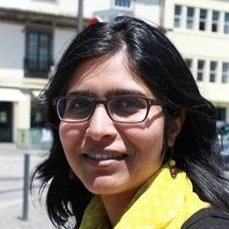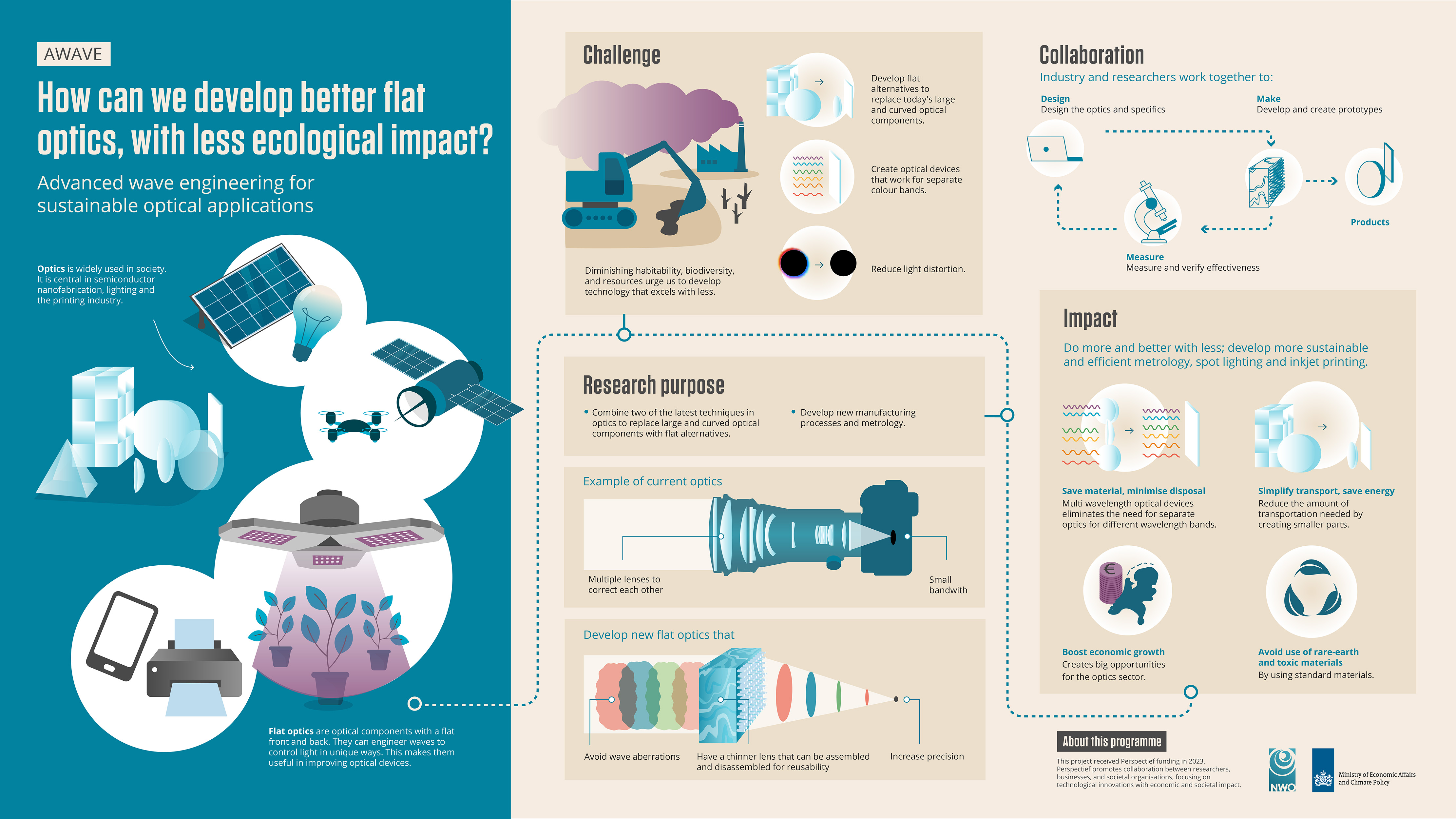NWO grant for developing multi-purpose flat optical components
More and better optics with less. That is the ambition of the AWAVE consortium, led by TU Delft. The researchers will develop a flat optical component that might replace all curved optical components, such as lenses, in the future. This flat component should also be easy to recycle and contain fewer harmful substances. This ambitious project is funded by NWO's Perspective programme and has a range of potential applications.
Lamps, printers, cameras, chip machines, are a small sample of devices that contain optical elements. "Optics, the study of light, has always relied on curved surfaces, such as lenses, to shape light," says Nandini Bhattacharya, associate professor in the Department of Precision and Microsystems Engineering. "These optical components work only for specific wavelengths, and thus for certain colours. Therefore, depending on the device application multiple optical components are incorporated." In this project, the aim is to develop flat optical elements that can work for many different wavelengths.
Better precision with less components
The idea is that these flat components can direct multiple colours of light simultaneously and also with higher precision. This has many potential applications, such as lamps that use less energy while producing more light, higher quality printers and more precise chip manufacturing lithography machines with fewer components.
In addition, the sustainability of the optical elements to be developed is also a focus within the project. "Most current optical elements contain toxic chemicals or rare earth elements which are difficult to source to reach the high refractive index needed. Our goal is to reduce the use of these materials, so we will look for designing and manufacturing alternatives with more standard materials," says Bhattacharya.
The consortium
AWAVE consists of researchers from TU Delft, University of Twente and TU Eindhoven working with ARCNL, ACC Hyperion, ASML, Canon, Demcon, JMO, Signify, SCIL-Nanoimprint and Sumipro. They will receive 3.1 million euros in total for the next five years from the NWO's Perspective programme. This programme aims to contribute to the creation of economic opportunities within the key technologies and societal themes of the Mission-Driven Innovation Policy.

